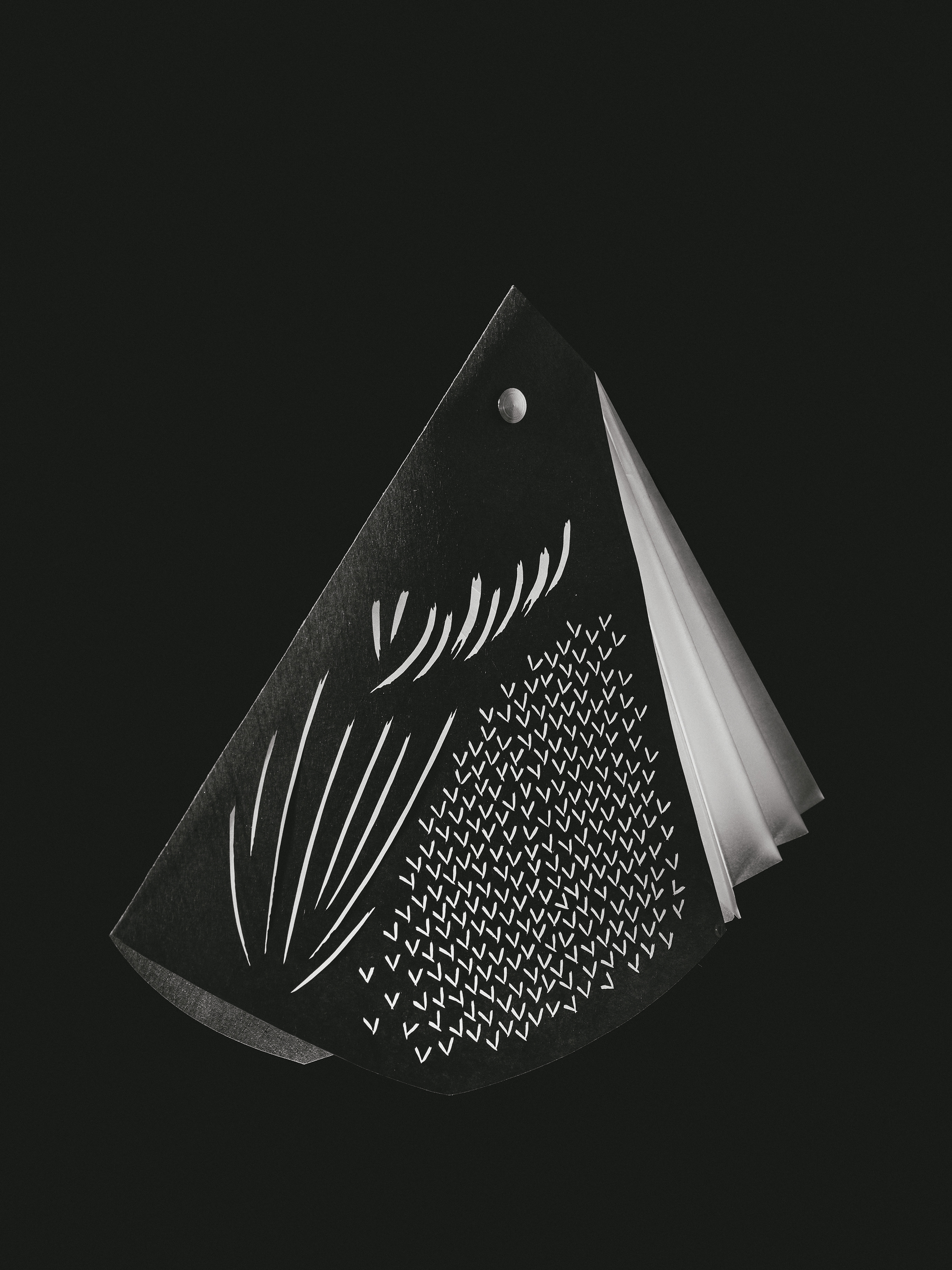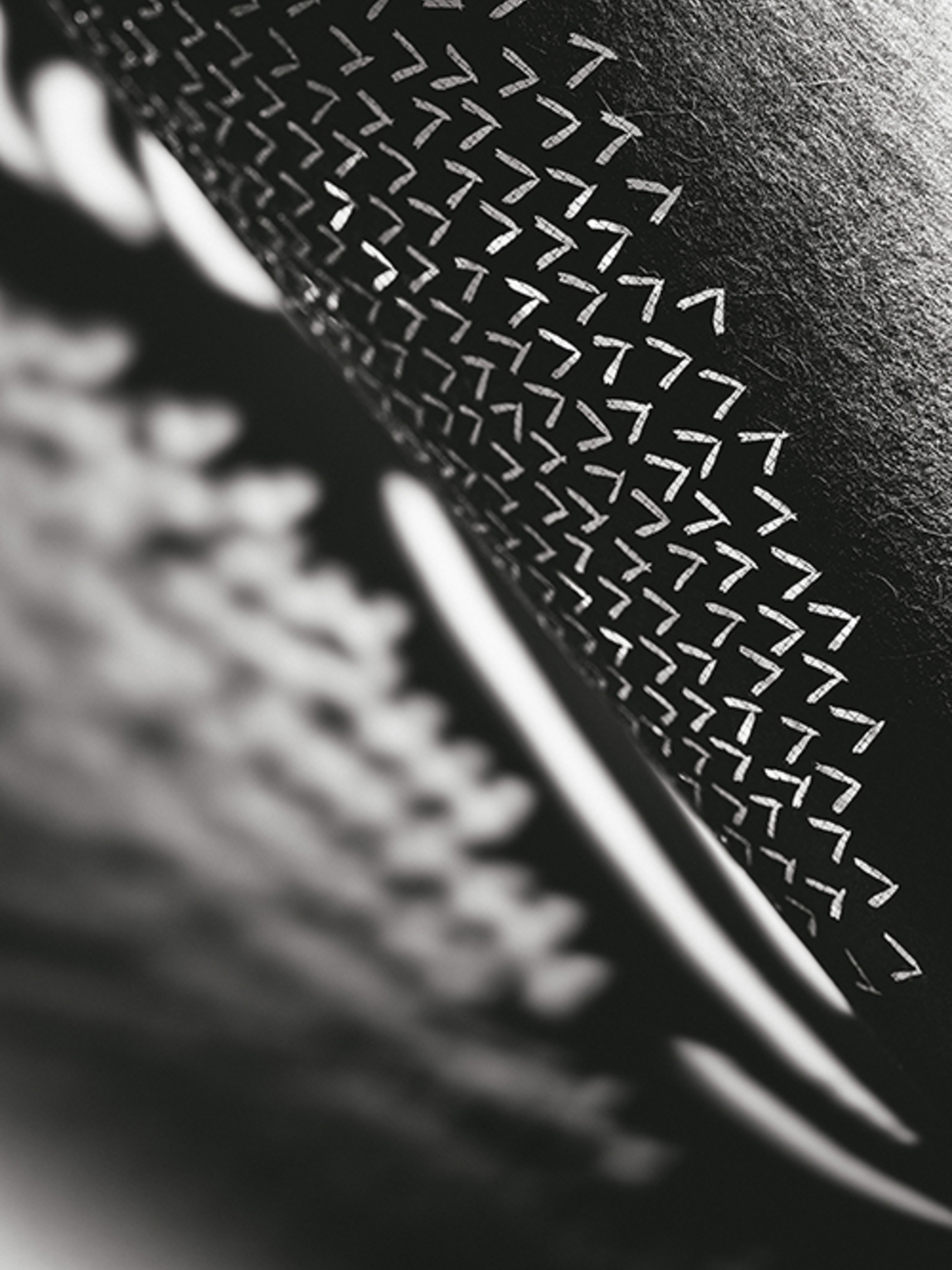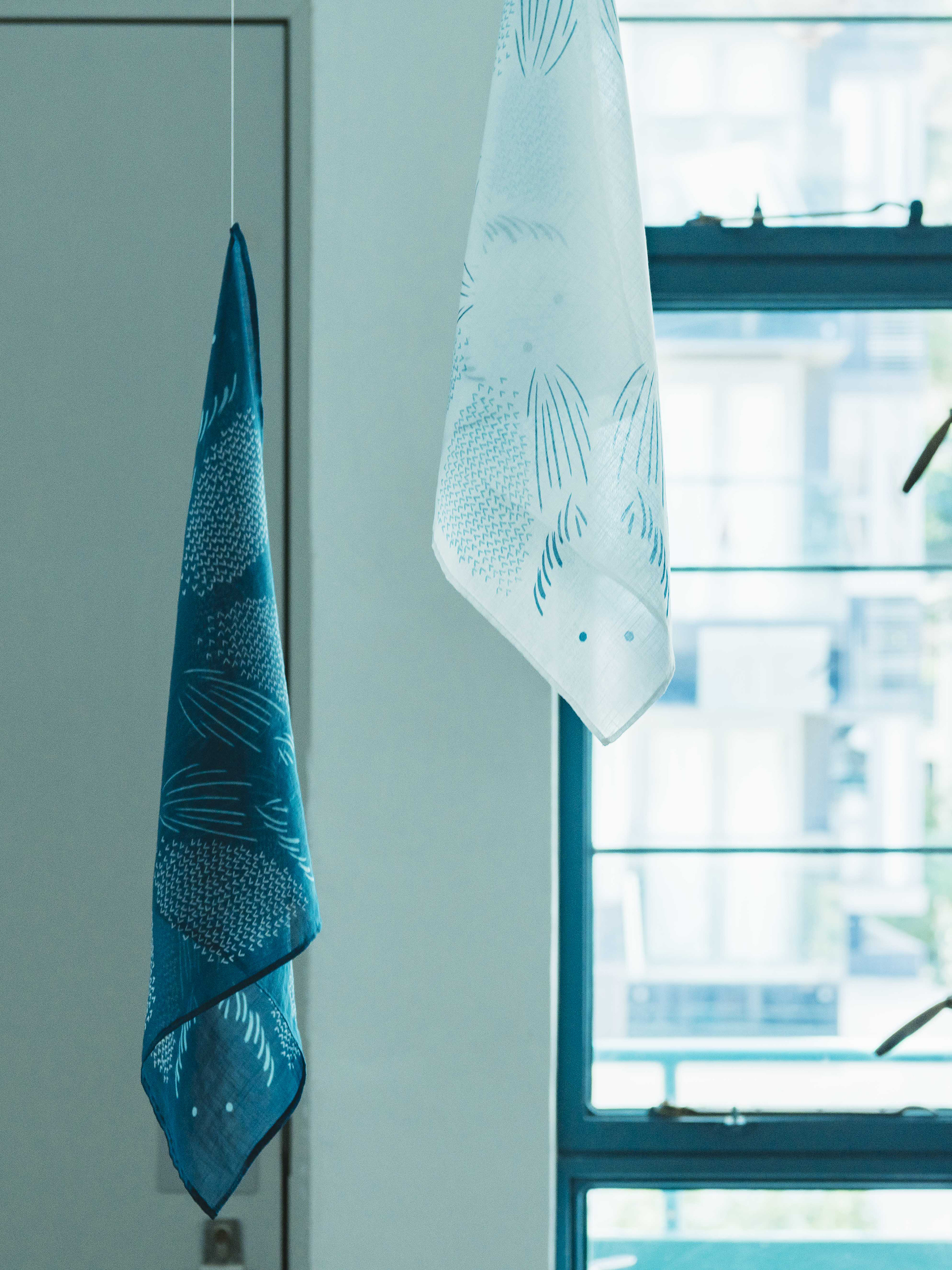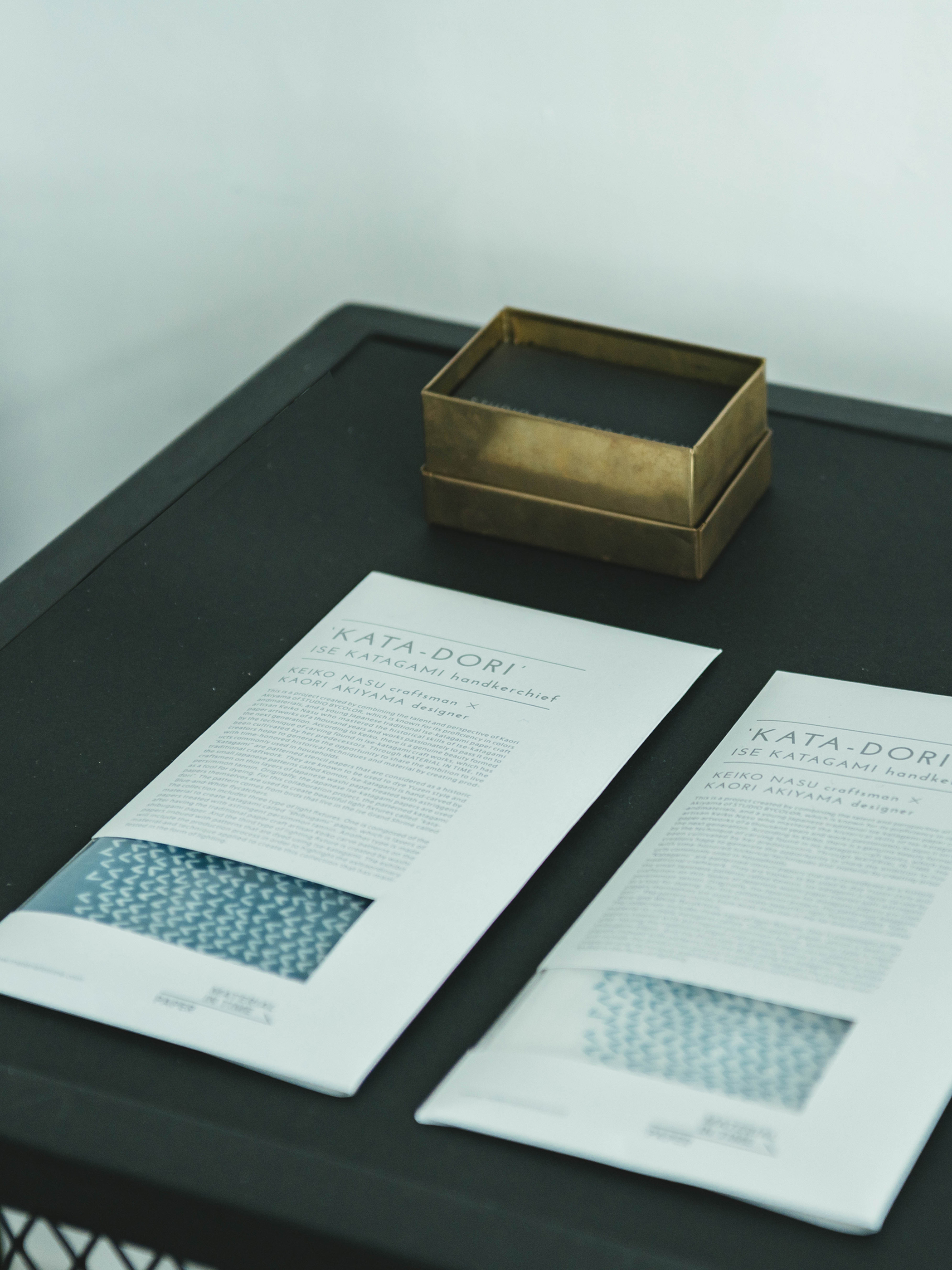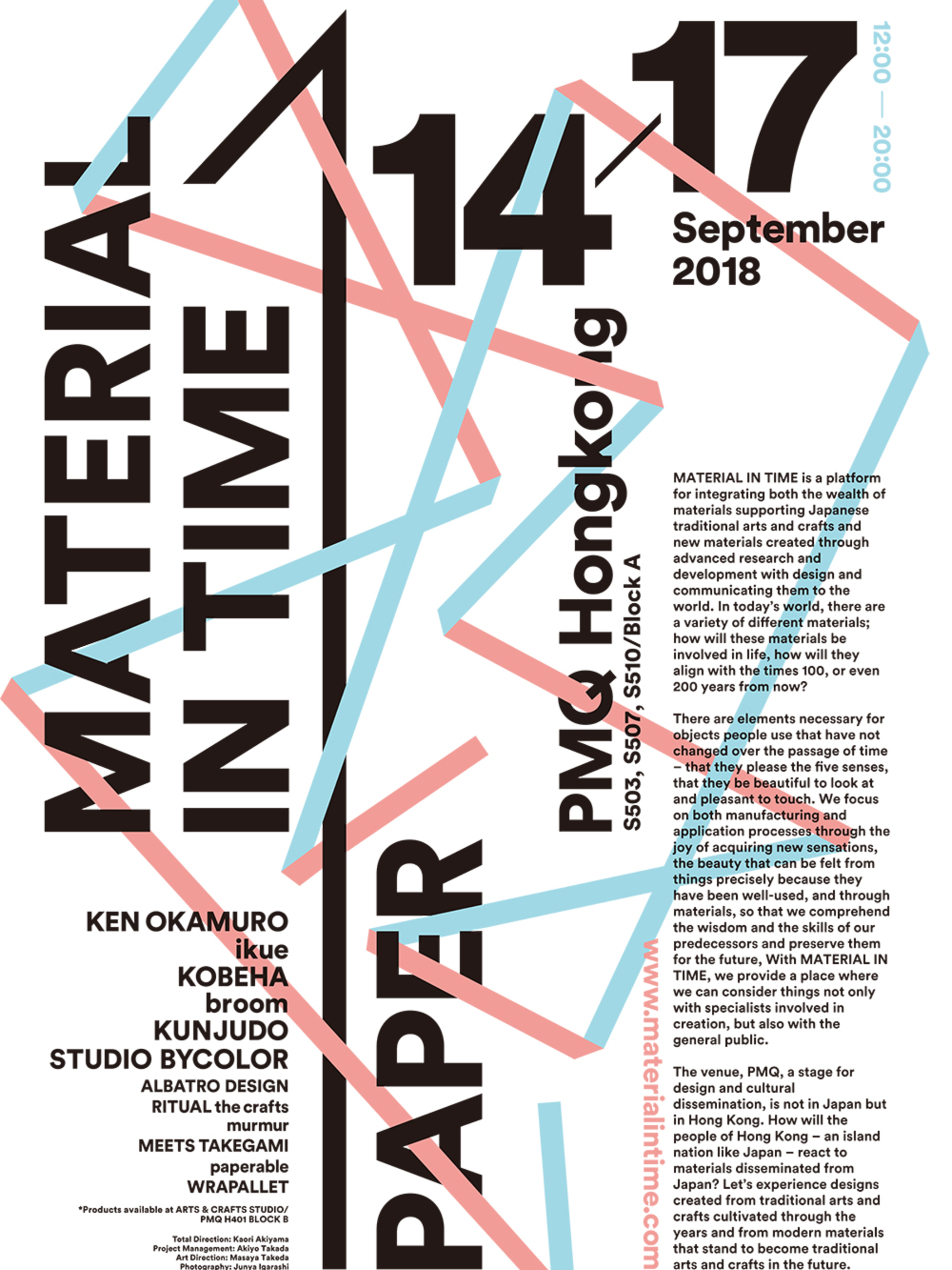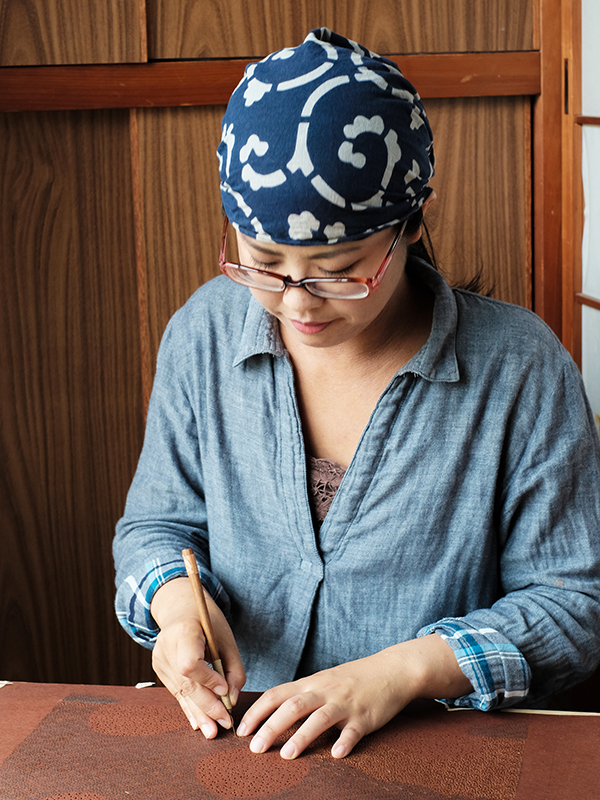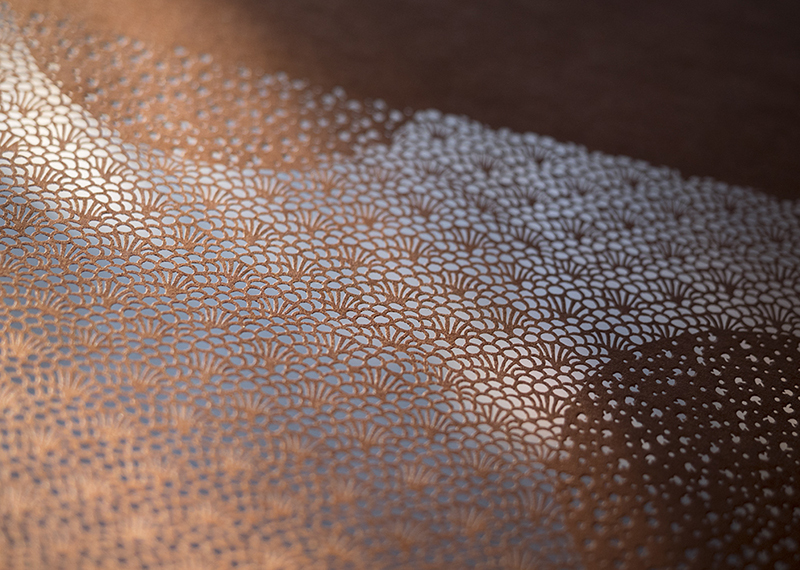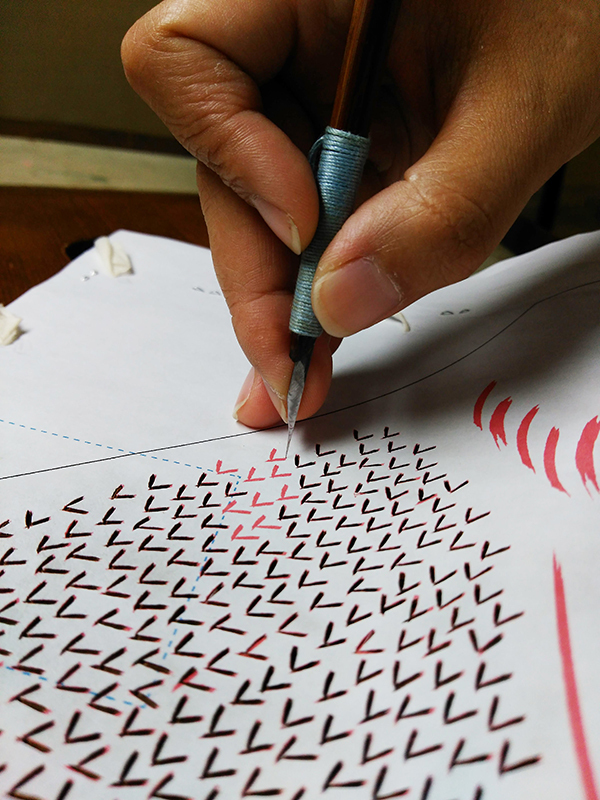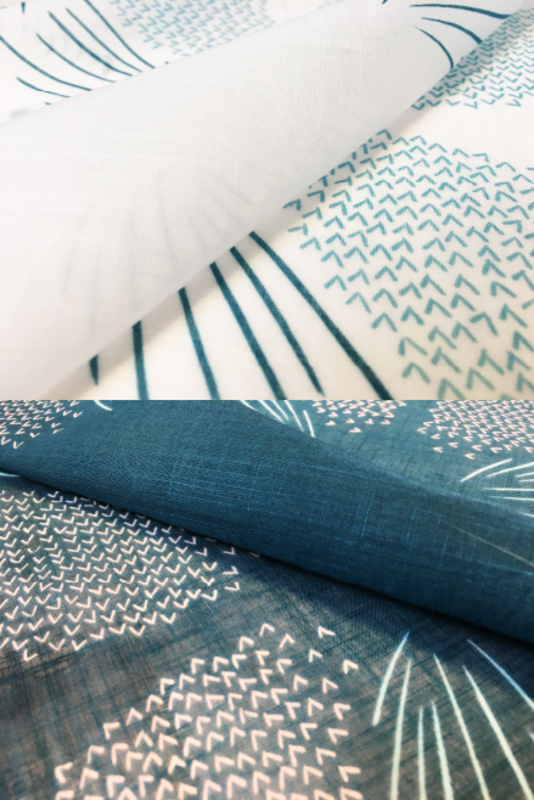This is a project created by combining the talent and perspective of Kaori Akiyama of STUDIO BYCOLOR and a young Japanese traditional Ise-katagami paper craft artisan Keiko Nasu.
Katadori means to make shape. The word "dori" means bird in Japanese.
STUDIO BYCOLOR is dedicated to find meanings and effects that colors have on people.
This firm is known to employ wide range of colors and material in product design, space design as well as branding. The driving force is curiosity and inquiring mind because of seeking comfort in product design. She is inspired and interested with the natural patterns of plants, animals, cracks and undulating bubbles.
Keiko left the printing company when she was 27 years old, She learned about Ise katagami in search of her life-long dream of making handicrafts. She moved to Mie prefecture for training.
She mastered the traditional way of making Ise katagami paper artworks which was developed thousands of years ago. and works passionately to pass it on to the next generation.
Katadori means to make shape. The word "dori" means bird in Japanese.
STUDIO BYCOLOR is dedicated to find meanings and effects that colors have on people.
This firm is known to employ wide range of colors and material in product design, space design as well as branding. The driving force is curiosity and inquiring mind because of seeking comfort in product design. She is inspired and interested with the natural patterns of plants, animals, cracks and undulating bubbles.
Keiko left the printing company when she was 27 years old, She learned about Ise katagami in search of her life-long dream of making handicrafts. She moved to Mie prefecture for training.
She mastered the traditional way of making Ise katagami paper artworks which was developed thousands of years ago. and works passionately to pass it on to the next generation.
